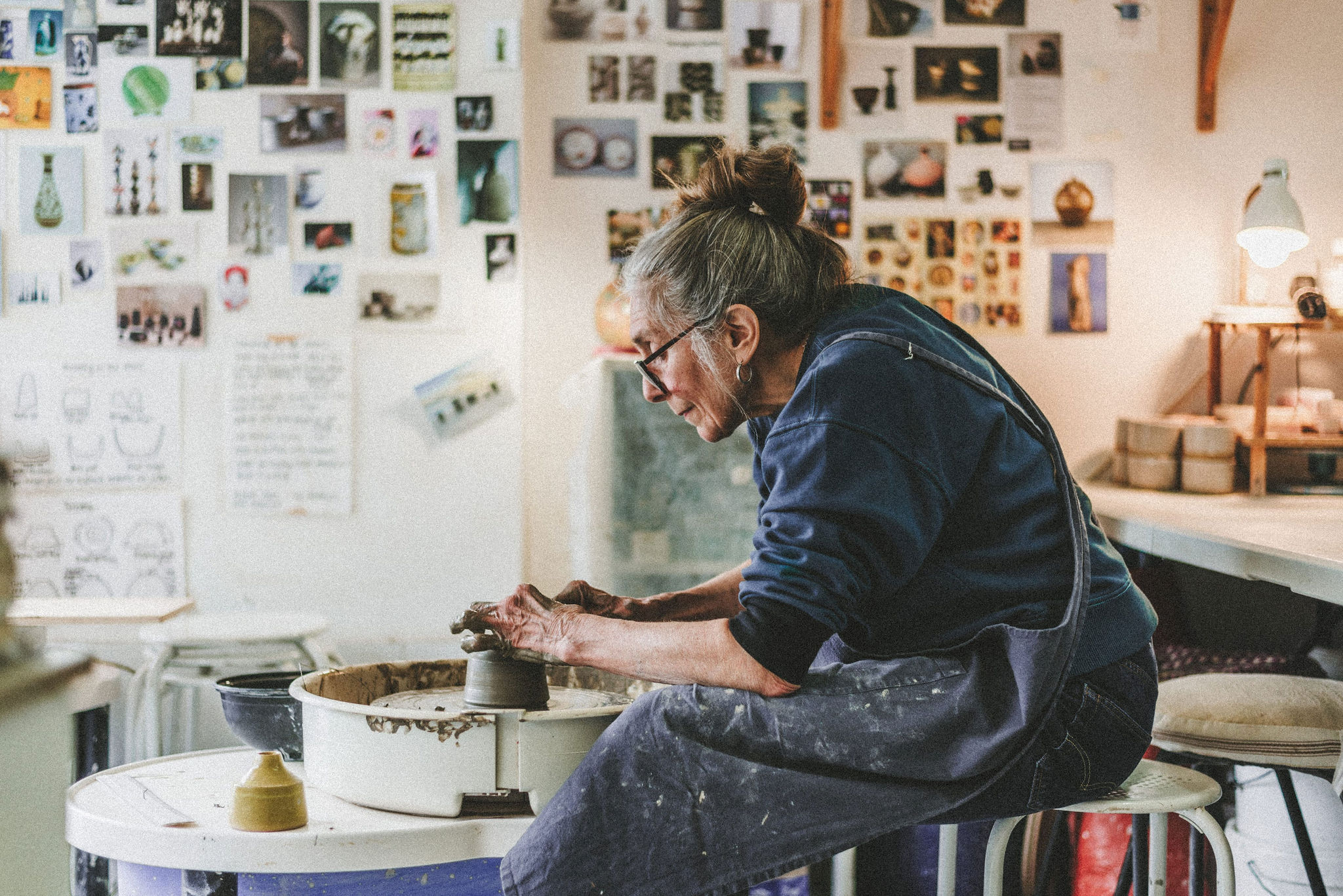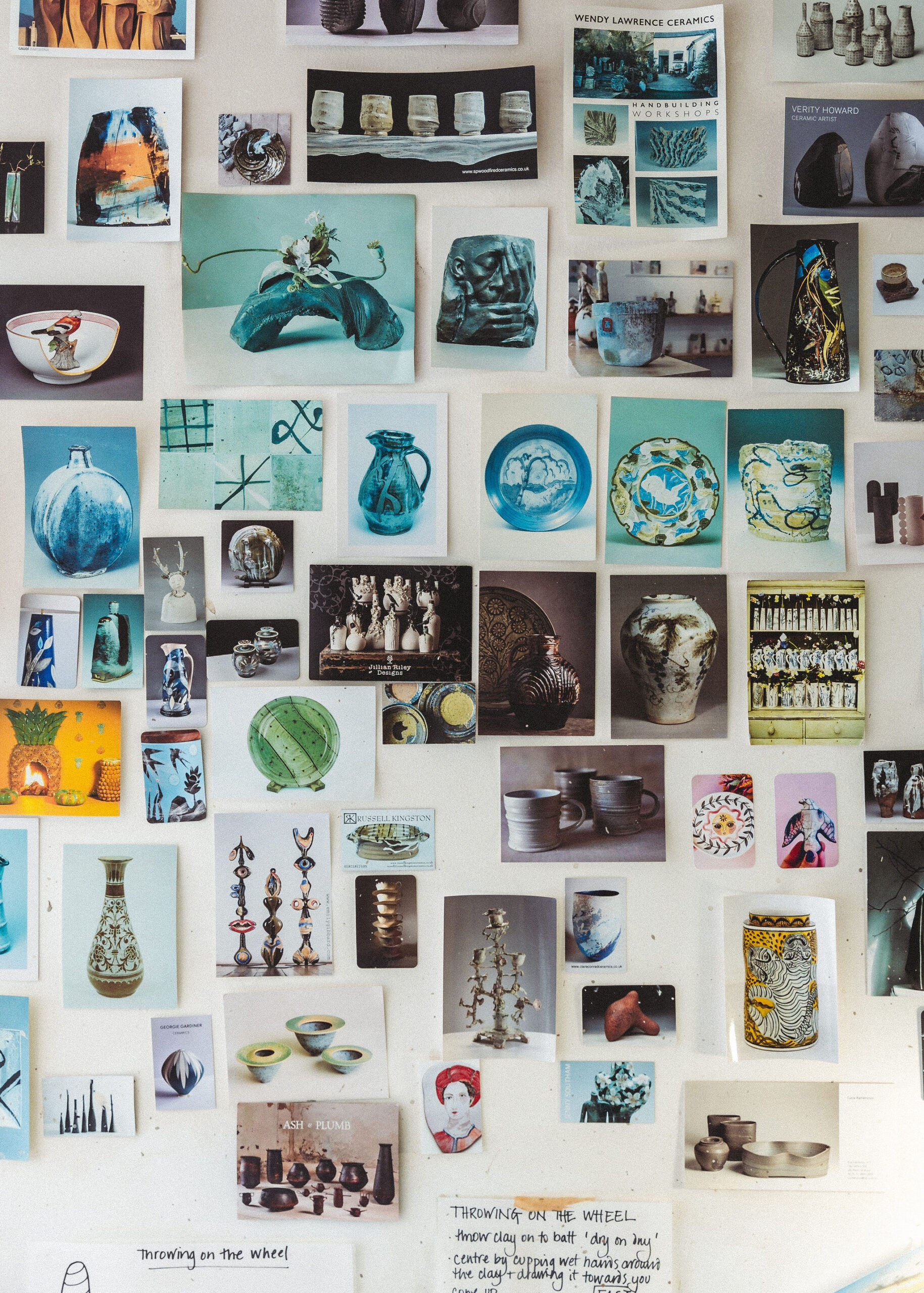
Carol Foster has lived and worked in Whitstable since she came here as a student in the 1970s, having fallen in love with the town instantly.
Her interest in ceramics grew from a chance job as a Girl Friday at Tabor Pottery in Canterbury with Les Brown, a job which turned into a four-year apprenticeship.
From the moment Carol first learned to use the wheel she was hooked, and over 40 years later, still loves to throw pots.


Carol works in her courtyard garden in a tiny converted shed. She rescued the beautiful window frames from a skip and painted them in her favourite green, which she named ‘Potterycrafts’ green as it reminds her of the colour used by the renowned Stoke-on-Trent ceramics suppliers for their kilns and clay bags.
Carol’s practice is two-fold: throwing and making works in clay, and teaching. She has, since 2018, taught from a studio on the edge of town, tucked away on a small industrial estate where other creatives have also set up spaces. Folk seek her out, and courses book up quickly. Carol feels passionately about handing on her learnt experience to students, an experience that is rooted in not only in throwing and making, but also in her travels where she seeks out for herself some of the techniques and makers she has studied.
This summer she is on a trip to the Spanish town of Manises, near Valencia, which has a renowned art school specialising in the study of ceramics, and a local ceramics tradition going back 700 years.

In 2008 Carol went on a trip to Japan with her daughter, which was very significant and influential for her practice, in particular when she spent time in the Mingeikan, the Japan Folk Crafts Museum in Meguro Ward, Tokyo. The museum links the Bernard Leach studio pottery movement with the ‘mingei’ folk craft tradition and the notion of the ‘unknown craftsman’, emphasising the anonymity of the maker and beautiful objects for all.

Carol began using white earthenware, decorated with coloured slips and using fluid marks that evoke calligraphy, Art Deco, the country style pottery of Devon, William Morris and William de Morgan—the list of her many influences and inspirations is impressive in its breadth.

In 2020 her practice moved from using earthenware to stoneware, bringing a certain finesse, with a new focus on form and simple glazes inspired by Lucy Rie.
In 2024 we began working with Carol to develop a collection of simple tableware. We collaborated on a restricted palette used across forms: cups, bowls, candleholders, vases.
We are continuing to add to this range with new shapes and colours while retaining our customers’ favourites.


